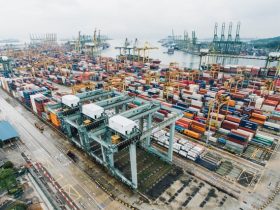If you’ve ever experienced a slow connection while watching a video or playing games, you know the importance of understanding network latency. It impacts how quickly resources can be accessed, making or breaking your online experience. Fortunately, learning more about network latency and how to troubleshoot it is easy.
Distance
Regarding network latency, the physical distance packets must travel is a major issue. When packets are sent from one device to another, the path they must take is determined by hardware and software installed at both ends of the connection. Individual packets are buffered and queued during transport at various stages before transferring to the next stage. Some packets will have no waiting time, while others will have a long wait at multiple stops before traveling onward to their destination. This process can take several seconds or minutes, depending on the length of the transport connection and the speed at which each data packet is transported. Packet delay variation (PDV) is a key metric determining the average time data packets travel between devices. When packets are transported over a long-distance connection, the number of hops they need to take can also increase their overall latency. Each hop is a separate transmission point that pushes a data packet forward to the next point.
Propagation Delay
The delay of a signal in propagating from one point to another often called the propagation delay, is a major factor in network latency. Propagation delay is typically related to distance and can also be affected by the type of medium a signal travels through, such as copper wire, fiber, or air.
The propagation delay can be difficult to calculate because it is based on a complex formula and varies based on the physical medium used. For example, a signal traveling through the copper wire can be slowed down by as much as 60% because of the velocity factor. This velocity factor depends on the type of dielectric material in the cable and varies from 0.65 to 0.9, as shown in the table below. In most cases, a signal traveling through a medium with a higher velocity factor has a faster signal and vice versa, so the propagation delay for a particular medium will be higher than if it were traveling through a lower velocity factor medium.
To calculate the delay of a packet, it is important to consider its various components, including propagation delay and transmission delay. Even though the propagation delay is more difficult to calculate than the other two, it is essential to understanding network performance and can guide improvement decisions.
Bandwidth
Data transfer rates through Internet connections are measured in terms of bandwidth. It’s often confused with speed, but it’s different. Understanding the difference between bandwidth and latency is important, as they affect network performance. The main difference is that bandwidth is a volume measurement, while latency is a speed measurement. Using an analogy, think of the internet as a highway (opens in new tab) that allows vehicles to travel from a one-mile marker to another within a specific time frame. A highway with adequate lanes and capacity allows traffic to flow easily without any issues. But if a highway has fewer lanes and insufficient capacity, it can become congested and slow to move.
So, when it comes to a website or other service, if you’re getting high-latency problems, that’s typically a sign that there’s a problem with the data transfer on the network. This may be caused by various factors, from server overload to poor routing. Fortunately, both bandwidth and latency can be easily fixed. The most common solutions are to upgrade to a plan with higher bandwidth or to minimize network usage in general. The best way to determine what’s causing the issue is to analyze how your users use their connection.
Routing
Routing protocols determine the path of a packet from the network origin to the destination. Routing algorithms use metrics like hop count, bandwidth, and delay to determine the best route to a destination.
Several routing protocols use static routes for each network device, but some use dynamic routes, allowing routers to update their routes as they discover new ones. Dynamic routes also consider the traffic load on the network, so they can adjust their routes to maximize performance. There are many causes of latency, including distance, transmission medium (wireless, copper cable, fiber optic, etc.), jitter and packet loss, and user-related issues. High-latency networks can have a significant impact on business productivity and user experience.
Routers use a routing table to create and maintain the best paths from the network origin to the destination. Network administrators typically manually maintain these tables but they can be automatically updated using routing protocols. One way to help improve routing is to use a scalable architecture, which allows you to grow your network without adding additional infrastructure. This can allow you to optimize your routing, reduce costs and improve network performance.



















Leave a Reply